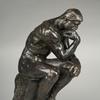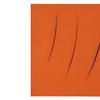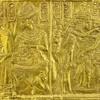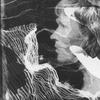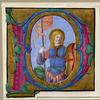'Along El Camino Real' Exhibition Explores the History of California Missions in Art
- IRVINE, California
- /
- February 09, 2017
The Irvine Museum Collection at the University of California, Irvine presents “Along El Camino Real,” an exhibit (through May 18, 2017) that explores the history of the California missions. These outposts were connected by El Camino Real (the Royal Road or the King’s Highway), which today approximates California's Highway 101.
The first mission in what is now California was founded by Spain in San Diego in 1769. Over the next 54 years, 20 more were established, stretching as far north as Sonoma. In 1821, Mexico declared its independence from Spain and claimed California as a province. The missions were greatly restricted during this period, and their vast land holdings were taken away. By 1850, when California became the 31st state of the U.S.A., most missions had been abandoned and were in ruins. It wasn’t until the 1890s, when artists began to portray them as relics of California’s romantic past, that a serious effort was made to preserve and restore the structures.
The earliest views of the California missions in the exhibition are selections from a set of etchings by Henry Chapman Ford (1828-1894) published in 1883. The oldest paintings on display are the “Mission San Juan Capistrano” and “Chinatown, Los Angeles” both painted by Alexander Harmer (1856-1925) in 1886. What is now one of the most beautiful gardens in California is shown as a dry, dusty yard, with just a few geraniums against the pillars of the arcade.
Also on display are works by such noted California artists as Alson S. Clark (1876-1949), Alice Coutts (1879-1973), Edwin Deakin (1838-1923), William Lees Judson (1842-1928), Elmer Wachtel (1864-1929) and William Wendt (1865-1946). These paintings show many of California’s 21 missions. The most popular with artists, however, was Mission San Juan Capistrano, whose beauty and elegance earned it the nickname “Jewel of the Missions.”
The Irvine Museum donated its entire permanent collection to University of California, Irvine, in November. The university campus will eventually house the collection -- including a trove of California Impressionist art valued at $17 million -- in a new building.
Until UCI builds the new museum facility, exhibitions will be held at the current Irvine Museum location near the John Wayne Airport in Orange County.
Joan Irvine Smith, an arts patron and the great-granddaughter of James Irvine, the developer behind the Irvine Co. real estate empire, collected some 1,200 artworks. Joan Irvine Smith, Athalie Richardson Irvine Clarke, and James Irvine Swinden founded the nonprofit museum in 1993. The Irvine family have long been supporters of UCI.
Said UCI Chancellor Howard Gillman, “All collectors should know that our ambition is to become the focus for the study and appreciation of California art. After all, what better place to be the steward of this genre than a campus of the University of California?”



